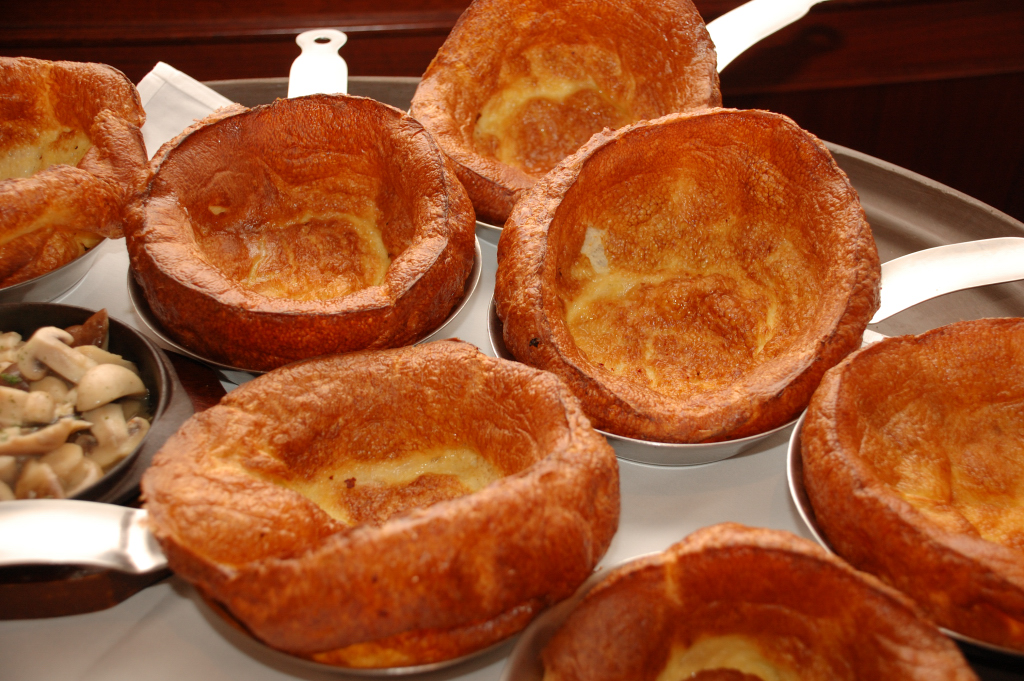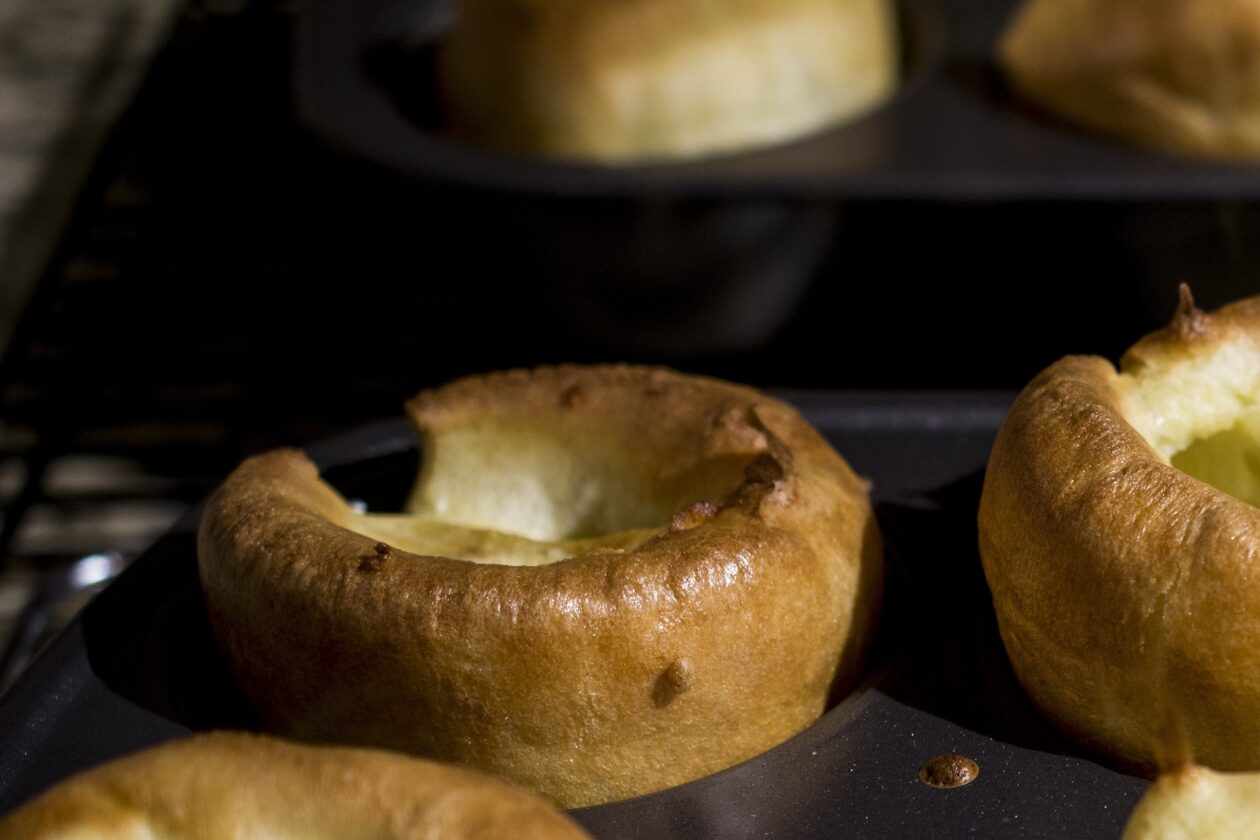Introduction
Loved as a mainstay of British cooking, Yorkshire puddings are renowned for their delicious flavor and cozy texture. These fluffy, golden-brown treats, originally from northern England, have come to be associated with festive dinners and Sunday barbecues. However, as eating habits evolve, concerns arise regarding the suitability of Yorkshire puddings for those aiming to control their weight effectively. Thus, the question emerges: “Are Yorkshire puddings good for weight loss?”
We delve into the nutritional profile and potential impact of Yorkshire puddings on overall dietary goals to determine whether they can contribute to weight loss efforts. While Yorkshire puddings are undoubtedly delightful, understanding their calorie count, ingredient composition, and serving size is crucial for making informed decisions, particularly for individuals seeking to lose weight.
Throughout this discussion, we aim to provide insightful analysis and practical advice to help readers navigate the role of Yorkshire puddings in a balanced diet. By offering a thorough examination and unique perspective, we aim to empower individuals to make informed dietary choices while indulging in the delicious pleasures of Yorkshire puddings. Let’s explore whether you can incorporate these beloved British treats into your weight loss plan without compromising flavor or nutrition.
Understanding Yorkshire Puddings
Yorkshire puddings are baked from a basic batter of eggs, flour, milk, and water. They are a staple of British cuisine. These tasty sweets have a long and illustrious history, originating in northern England centuries ago. Yorkshire puddings, usually served with a Sunday roast, have developed into a flexible meal that may be consumed in various ways. They are loved by food enthusiasts worldwide for their comforting flavor and fluffy texture, even outside of Britain.
The versatility of Yorkshire puddings is what makes them so beautiful. They can be served with onion gravy as an appetizer, enticing the palate with a flavorful beginning. Alternatively, Yorkshire puddings are a staple of the traditional Sunday roast and go well with meat and gravy as a main meal. Furthermore, their adaptability permits inventive culinary creations, including stuffing them with bangers and mash or adding sausages to make the well-liked toad in the whole dish.
Yorkshire puddings are highly regarded in British cooking, where they are praised for their capacity to transform ordinary ingredients into delectable dishes. They are a popular side dish for many dishes because of their light, airy texture and golden-brown skin, which gives a hint of decadence to any meal. Yorkshire puddings never fail to please palates and bring back memories of homey, comforting foods, whether devoured on their own or as part of a substantial roast dinner.
Nutritional Analysis

Examining the nutritional content of Yorkshire puddings is crucial while pondering their possible effect on weight loss. Even though these sweet snacks are incredibly delicious, those trying to lose weight may be concerned about their calorie level. A single homemade Yorkshire pudding has between 150 and 200 calories on average, mostly from fats and carbohydrates. However, the precise nutritional makeup may differ depending on elements like preparation ingredients and portion quantity.
Yorkshire puddings have a low protein composition and are mostly high in fats and carbohydrates regarding macronutrient content. An average serving of Yorkshire pudding has 8–12 grams of fat, mostly from butter or oil used in baking, and 20–30 grams of carbs, mostly from flour. Although the body uses carbs as its main energy source, eating too many can lead to weight gain if they are not balanced by exercise and a moderate diet.
Furthermore, compared to homemade versions, store-bought Yorkshire puddings could have larger amounts of chemicals, preservatives, and harmful fats. These processed versions may not be as suitable for people trying to lose weight because they frequently need more freshness and nutritional value than handmade alternatives. Thus, making your Yorkshire puddings using healthy components and little to no additional fat can be a wiser option for individuals trying to lose weight.
Nutrition Facts
- Serving Size: 48 servings (101.49g)
- Servings Per Container: 48
- Amount Per Serving:
- Calories: 120
- Calories from Fat: 25
- Total Fat: 2.5g (4% DV)
- Saturated Fat: 1g (5% DV)
- Trans Fat: 0g
- Cholesterol: 70mg (23% DV)
- Sodium: 320mg (13% DV)
- Total Carbohydrate: 18g (6% DV)
- Dietary Fiber: <1g (4% DV)
- Sugars: 2g
- Protein: 6g
- Vitamins and Minerals:
- Vitamin A: 0% DV
- Vitamin C: 0% DV
- Calcium: 4% DV
- Iron: 8% DV
Percent Daily Values (DV) are based on a 2,000-calorie diet.
Ingredients
- Water, Tap, Drinking
- Flour, All Purpose Wheat, White, Bleached, Enriched
- Eggs, Scrambled, No Added Fat
- Milk, Reduced Fat, Fluid, 2% Milkfat w/ Added Vitamin A & Vitamin D
- Soup, Beef Stock, Home Prepared
- Salt, Table
Source (hsc.wvu.edu).
This comprehensive nutritional information provides valuable insight into the product’s composition, helping consumers make informed dietary choices.
In conclusion, Yorkshire puddings provide a tasty dimension to meals, but those trying to lose weight may need help getting enough calories and fat. People can include Yorkshire puddings in moderation as part of a balanced diet by being aware of their nutritional makeup and choosing portion sizes and cooking techniques wisely. A holistic approach to general health and well-being, frequent physical activity, and mindful eating are the keys to successful weight management.
Impact on Weight Loss

When thinking about the place of Yorkshire puddings in a weight reduction plan, it’s critical to dispel common myths and comprehend how they could affect dietary objectives. Because of their rich, savory flavor, Yorkshire puddings are usually considered indulgent, but with careful planning, they may be a healthy part of a weight loss diet.
A common misperception is that anyone trying to lose weight should avoid all foods high in carbohydrates. Nonetheless, moderation and balance—as opposed to rigid exclusion—are more important. Yorkshire puddings can provide fullness and pleasure without jeopardizing weight loss attempts if eaten in moderation and as part of a well-rounded meal plan.
Furthermore, the amount of calories and general healthiness of Yorkshire puddings can differ greatly based on elements like the ingredients and portion size that are utilized during cooking. Reducing calories while optimizing nutritional value can be achieved by choosing smaller serving sizes and using healthful components like whole grain flour and little added oil. Furthermore, by raising the meal’s total nutrient density, serving Yorkshire puddings with lean protein sources and an abundance of vegetables further improves their suitability for weight loss.
In summary, although Yorkshire puddings might not be considered classic “diet foods,” they can undoubtedly be included in a diet for weight loss if eaten carefully and balanced. People can continue to achieve their weight loss objectives while enjoying the comforting taste of Yorkshire puddings by clearing up myths, comprehending portion control, and selecting well-informed ingredients. Always remember that making lifestyle changes and taking a comprehensive approach to health and wellness are the keys to permanent weight loss.
Health Benefits and Drawbacks
A popular ingredient in British cooking, Yorkshire puddings have advantages and disadvantages for overall well-being and weight loss. It is essential to comprehend these factors to make wise dietary decisions.
Exploring the Potential Benefits: Because of their high protein content and satiety component, Yorkshire puddings may have certain health benefits. Protein is essential for maintaining the health of muscles and fostering sensations of fullness, both of which can help with weight management by lowering caloric intake overall. Yorkshire puddings become a fantastic source of high-quality protein and support a balanced diet when they are made with components like eggs and milk.
Discussing the Drawbacks: Yorkshire puddings have disadvantages despite their high protein level, chiefly because of their high fat and calorie content. Traditional dishes frequently include large amounts of fat or oil, contributing to their high-calorie content. Furthermore, the refined flour found in many recipes for Yorkshire puddings can cause blood sugar surges, which, if ingested in excess, may negatively affect attempts at weight loss and metabolic health in general.
Providing Tips for Healthier Versions: People can easily prepare healthier versions of Yorkshire puddings to lessen the negative effects connected with them. For example, substituting skim milk for whole milk lowers total fat without sacrificing vital nutrients. Similarly, reduce the amount of calories without sacrificing flavor by using less oil or healthier options like olive oil. The nutritional profile of Yorkshire puddings can be improved by adding Fiber and nutrients using whole grain flour or alternative flours like coconut or almond flour.
While Yorkshire puddings can be a healthy addition to a diet, it’s important to consider portion amounts and preparation techniques to optimize the advantages and reduce potential risks. People can support their weight loss and wellness objectives while still enjoying the comforting taste of Yorkshire puddings by using healthier ingredients and making thoughtful decisions. Remember that maintaining long-term nutritional success requires a focus on moderation and balance.
Role in Balanced Diet
The crucial concepts to remember when considering Yorkshire puddings’ place in a balanced diet are moderation and balance. Even though Yorkshire puddings aren’t usually regarded as conventional “diet food,” when consumed mindfully, they can still be in a well-rounded meal plan.
Stressing Moderation and Balance: It’s critical to realize that no food is intrinsically beneficial or detrimental to weight loss. A healthy diet is more about the general balance and diversity of foods ingested. A long-term weight management program requires maintaining dietary satisfaction and avoiding emotions of deprivation, both of which can be achieved by sometimes consuming Yorkshire puddings in moderation.
Suggested Inclusion in Meal Plans: Several methods exist to include Yorkshire puddings in a balanced meal plan. For instance, consider combining them with lean protein sources like grilled chicken or fish or lighter options like roasted vegetables rather than as the main course with fatty meats and sauce. This method guarantees that Yorkshire puddings add to the meal’s nutritional value without overpowering it with fat or calories.
Providing Substitutes for Customary Accompaniments: Considering the traditional accompaniments given with Yorkshire puddings when trying to support weight loss goals is important. Go for lighter options like fresh herbs, homemade salsa, or dips made with low-fat yogurt instead of hearty gravies or creamy sauces. These substitutions give Yorkshire puddings more taste and moisture content while consuming less total calories and fat, which helps with weight loss goals.
In conclusion, if Yorkshire puddings are eaten in moderation and are served with wholesome sides, they can be a satisfying element of a balanced meal. People can enjoy the comforting taste of Yorkshire puddings and still meet their weight loss objectives by carefully arranging them into meal plans and selecting the right side dishes. Recall that balancing variety, moderation, and balance is essential to establishing and sustaining a healthy lifestyle.
Practical Tips for Enjoying Yorkshire Puddings

Even though they are tasty, Yorkshire puddings might be difficult for people trying to control their weight. However, using the proper method, you can enjoy them without jeopardizing your efforts to lose weight. Here are some useful advice to help you enjoy Yorkshire puddings without deviating from your health objectives:
Portion Control Techniques: Managing your portion sizes is one of the best ways to enjoy Yorkshire puddings without going overboard on calories. Make smaller puddings or cut larger ones into halves or quarters rather than serving enormous, gigantic ones. This satisfies your desire for Yorkshire puddings without going overboard.
Attentive dining Techniques: Using focused techniques when dining will also assist you in avoiding consuming too many Yorkshire puddings. Give each bite of food your attention as you taste it, noticing its flavors, textures, and sensations. By eating slowly and carefully, you can identify when you’re full and avoid mindlessly grabbing for more Yorkshire puddings than you need.
Lighter Recipe Ideas: Choosing lighter recipe options is another way to savor Yorkshire puddings without gaining too much weight. Instead of whole milk, think about skimmed milk and lowering the batter’s fat or oil content. For added nutrition and Fiber, you can experiment with whole wheat flour or grated veggies like zucchini or carrots.
Appropriate Fillings or Toppings: Select fillings or toppings for Yorkshire puddings that are lower in fat and calories. Add salsa, Greek yogurt, or fresh herbs to your Yorkshire puddings instead of thick gravies or creamy sauces. You may also stuff them with lighter items like lean turkey breast, grilled chicken, or steamed veggies for extra taste and nutrition.
Following these helpful suggestions, you may include Yorkshire puddings in a balanced diet without compromising your weight loss goals. Remember that Yorkshire puddings can still be a delectable and guilt-free treat if you practice moderation and mindfulness and select lighter recipe choices.
Are Yorkshire Puddings Good for Weight Loss?
A. Short Answer:
In short, Yorkshire puddings are not typically considered ideal for weight loss due to their high calorie and fat content.
B. In-Depth Analysis:
While Yorkshire puddings can be a tasty addition to any meal, they are only sometimes conducive to weight loss efforts. These fluffy, savory treats are traditionally made with flour, eggs, and milk, resulting in a calorie-dense food that may contribute to weight gain if consumed in large quantities.
Moreover, Yorkshire puddings are often served alongside hearty dishes like roast beef and gravy, increasing the overall calorie count. Additionally, the fat content in Yorkshire puddings, especially when cooked in oil or butter, can be a concern for individuals watching their fat intake or trying to lose weight.
However, it’s essential to consider portion size and consumption frequency when evaluating the role of Yorkshire puddings in a weight-loss diet. Regularly enjoying small portions of Yorkshire puddings as part of a balanced meal may not significantly hinder weight loss.
In summary, Yorkshire puddings are delicious and a beloved part of British cuisine; they are not the best choice for individuals looking to lose weight due to their high calorie and fat content. However, practicing moderation and incorporating Yorkshire puddings into a well-balanced diet occasionally can still be enjoyed as a treat without derailing weight loss efforts.
FAQ Section:
1. How many calories in a standard Yorkshire pudding?
The number of calories in a standard Yorkshire pudding can vary depending on the recipe and size. On average, a medium-sized Yorkshire pudding typically contains around 100-150 calories.
2. What is the healthiest pudding to eat?
When considering healthier pudding options, look for recipes using wholesome ingredients like whole grains, fruits, and natural sweeteners like honey or maple syrup. Opting for puddings made with low-fat dairy or plant-based milk alternatives can also reduce the calorie and fat content.
3. How many calories in a serving of Yorkshire pudding?
The calorie count in a serving of Yorkshire pudding depends on factors such as portion size and ingredients used in the recipe. On average, a single serving of Yorkshire pudding contains approximately 100-150 calories.
4. Is it OK to eat pudding every day?
While enjoying pudding occasionally as part of a balanced diet is fine, consuming it daily may not be ideal for maintaining overall health. Puddings often contain sugar, fat, and refined carbohydrates, which can contribute to weight gain and other health issues if consumed excessively.
5. How much protein is in a Yorkshire pudding?
A Yorkshire pudding typically contains around 3-5 grams of protein per serving, depending on the size and recipe variations.
6. How much fat is in Yorkshire pudding tins?
The fat content in Yorkshire puddings can vary depending on the cooking method and recipe used. On average, a single serving of Yorkshire pudding may contain approximately 5-10 grams of fat.
7. Is there sugar in Yorkshire puddings?
Traditional Yorkshire puddings contain no added sugar, as they are savory dishes made with flour, eggs, and milk. However, some modern variations or sweet dessert versions of Yorkshire puddings may include sugar in the ingredients.
8. How many carbs are in 2 Yorkshire puddings?
The carbohydrate content in 2 Yorkshire puddings can vary depending on their size and ingredients. On average, two medium-sized Yorkshire puddings may contain approximately 20-30 grams of carbohydrates.
9. How many calories are in 100 grams of Yorkshire pudding?
The calorie count in 100 grams of Yorkshire pudding can range from 200 to 300 calories, depending on the recipe and ingredients used.
10. Is Yorkshire pudding salty or sweet?
Traditional Yorkshire pudding is savory and not sweet. It is typically served as a side dish with delicious meals such as roast beef and gravy.
11. What’s the difference between pudding and Yorkshire pudding?
The main difference between pudding and Yorkshire pudding is their ingredients and preparation methods. Pudding is a sweet or savory dessert dish made from milk, eggs, sugar, and flavorings, often cooked by baking, steaming, or boiling. On the other hand, Yorkshire pudding is a savory British side dish made from a batter of flour, eggs, and milk or water, traditionally baked in hot fat.
12. What do you eat with Yorkshire pudding?
British cuisine traditionally serves Yorkshire pudding with roast beef and gravy as a side dish. However, it can also be enjoyed with roasted meats and vegetables or as part of a Sunday roast dinner. Some people also want Yorkshire pudding with savory fillings such as sausages and onion gravy as a main course dish.
Conclusion
We have now discussed the issue of whether Yorkshire puddings help people lose weight. With their crispy outside and fluffy inside, Yorkshire puddings can make a lovely complement to meals. Still, their high fat and calorie content may differ from weight loss objectives when overindulged. But moderation is essential.
It’s critical to remember that no food is fundamentally “good” or “bad” for losing weight. Rather, the focus should be on portion management and balance. Yorkshire puddings can fit into a weight loss plan when consumed in moderation with lots of fruits, vegetables, lean proteins, and complete grains in a balanced diet.
In the end, people should pay attention to their bodies and make decisions that suit their preferences and aspirations for their health. Long-term health and sustainable weight management depend on monitoring total calorie consumption and upholding a varied diet full of nutrient-dense foods, whether Yorkshire puddings are occasionally enjoyed as a pleasure or are purposefully included in a balanced meal plan.
Reference
Yorkshire pudding. (2024, January 23). In Wikipedia. https://en.wikipedia.org/wiki/Yorkshire_pudding
WebMD Editorial Contributors. (2020, January 29). Foods High in Carbs and Calories. WebMD; WebMD. https://www.webmd.com/diet/foods-high-in-carbs
Health. (2017). Protein. Vic.gov.au. https://www.betterhealth.vic.gov.au/health/healthyliving/protein
Clinic, C. (2022, April 26). How Many Calories Should You Eat in a Day? Cleveland Clinic; Cleveland Clinic. https://health.clevelandclinic.org/how-many-calories-a-day-should-i-eat/
Oliver, J. (2015, September 16). Amazing Yorkies. Jamie Oliver. https://www.jamieoliver.com/recipes/eggs-recipes/amazing-yorkies/
Was this helpful?

Joseph Emb, RDN
Founder of StyleVitally.com | Registered Dietitian & Wellness Advocate
What I Cover:
I’m passionate about connecting nutrition science and everyday wellness to help people live healthier, more vibrant lives. I write about evidence-based nutrition, mindful eating, sustainable lifestyles, and holistic well-being at StyleVitally.com.
My Background:
The University of Texas in Austin, where I earned my Dietetics diploma, laid the groundwork for my nutrition and health career. My training and hands-on experience taught me the science and art of using nutrition to enhance health and well-being.
Professional Journey:
I’m an RDN with lots of experience. I’ve helped people seeking tailored nutritional recommendations in clinical settings and community outreach programs. My constant learning and professional development ensure that my recommendations are always based on the latest evidence.
Ethical Commitment:
My practice prioritizes integrity. My content is transparent and objective, following the most significant ethical standards. I can give my audience unbiased advice because I’m not affiliated with food businesses or industry associations. I want to help people make informed health decisions that match their values and ambitions.
Join Me on the Wellness Journey:
Join me on the path to vitality and well-being, whether facing nutritional issues, seeking sustainable lifestyle changes, or simply wanting a better, happier you. We’ll discover how diet, mindfulness, and holistic well-being can maximize your potential.









